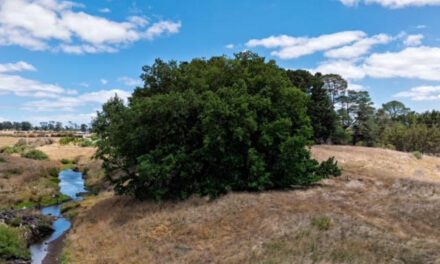Clive Hartley
Located just on an hour from Daylesford, the Heathcote region is a pleasant day trip with plenty of cellar doors to explore.
The region had the shortest, but most frantic gold rush in 1852 which saw 40,000 people flock to the area, only for them to move on in less than two years leaving a population of around 2,000 to establish the town and area. The first vineyards were planted by Henning Rathjen in the Colbinabbin district during the 1850s. Whilst the vineyard didn’t survive, it was replanted and is now the Whistling Eagle Vineyard, still owned by 4th generation descendants of Rathjen.
During the mid-nineteenth century the area would have had a number of vineyards but these were all pulled out by the government in 1896 in an endeavour to stop the spread of phylloxera which had been discovered in the region that year.
Coming up to the modern era, Paul Oskica established a vineyard in 1955, which pre-dates many of the more well know wineries. Always a quiet achiever, his wines gained a solid reputation in Melbourne, but were fairly unheard of outside of Victoria. Paul sadly passed away in 2019 but his highly experienced and well-travelled son, Simon, now runs the business.
The 1970s saw a number of vineyards such as Jasper Hill and Mount Ida being established. In 1980 David Anderson planted the Wild Duck Creek vineyard. It was the 1997 vintage that Robert Parker Jnr gave 99-points for their flagship “Duck Muck” Shiraz that achieved cult status and helped the Heathcote establish its reputation. But more importantly it was the wines made by Ron Laughton at Jasper Hill – Georgia’s Paddock and Emily’s Paddock Shiraz – and those wines obtaining a standing in the Langton Classification of Australian Wine.
The region is famous for its deep red basalt Cambrian-aged soils. These ancient igneous soils were forced to the surface by two fault-lines (McIvor and Heathcote) and are around 500 million years old. The soils have good water retention which is handy in drought years. Topographically, the fault lines dictate the landscape and run for more than 60km. As well as these ancient volcanic soils, there are overlays of sedimentary rock as well as gravel dropped by retreating ice sheets. It is a warm to hot region which generally suits rich full bodied and high alcohol red wines, Shiraz in particular.
Mario Marson at Vinea Marson spent many years working at Mount Mary in the Yarra Valley, as well as bouts overseas in places like Isole e Olena in Tuscany. In 2000 Mario planted in Heathcote. He does a good Prosecco, an interesting field blend called Grazia as well as a Friulano. The whites are sourced from the Alpine valley. Recommended wines include their Shiraz Viognier, Sangiovese and an excellent Nebbiolo. His daughter Madeleine is deeply involved in the winery and business.

Sanguine Estate is another family run company with involvement from a daughter – this time it is CEO Jodi Marsh. Sanguine Estate was established by Tony and Linda Hunter in 1996. Tony’s great grandfather, Pietro D’Orsa was a Swiss Italian migrant that planted vines close to the town of Maldon. Some highly rated wines include their Progeny and Inception Shiraz.
Silver Spoon Estate is Located 15 minutes north of Heathcote town, perched on the side of the Mt Camel ranges at 325 metres. It is named after a fault line which runs through the property as well as the name of a 1970s gold mine. Silver Spoon is completely 100% is off the grid both in the cellar door and winery.
Peter and Tracie Young started the winery in 2008. Peter was originally a geologist in the Hunter Valley. They bought the original 100 acre property as a retirement plan but have ended up working seven days a week. Peter makes the wine. The vineyards grows Tempranillo, Grenache, Mourvèdre, Viognier and, of course, Shiraz. A new cellar door and bistro was completed in October 2021. The Bistro operates from Friday to Sunday. They also have a program where you can become a winemaker for a season. I like their Sterling Grenache and their expressions of Viognier.
The reputation of the region has seen many producers from other regions purchase and make wines out of Heathcote fruit. A couple that comes to mind most recently was some impressive wines made by Place of Changing Winds and Hanging Rock Heathcote Shiraz.
Clive Hartley is an award-winning wine writer, educator and consultant. Check out his fortnightly radio show on Hepburn Community Radio website called “put a cork in it”. Want to learn more about wine? Try his book the Australian Wine Guide (7th ed) – available for purchase from Paradise Books in Daylesford, Stoneman’s BookRoom in Castlemaine or from his website – www.australianwineguide.com.au





